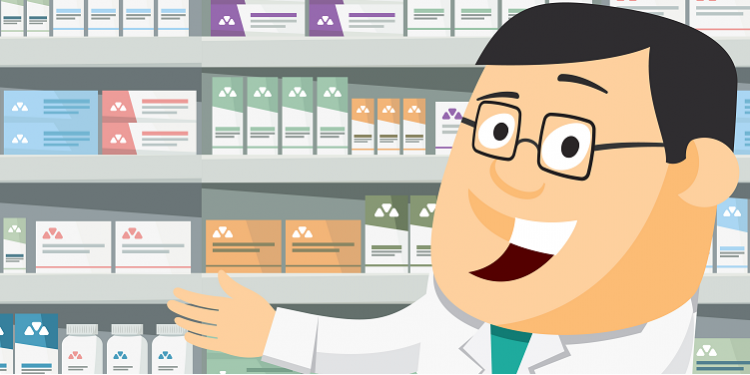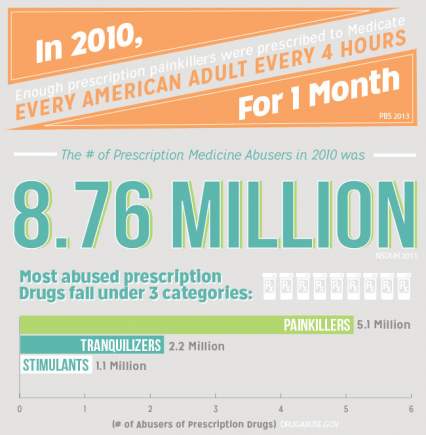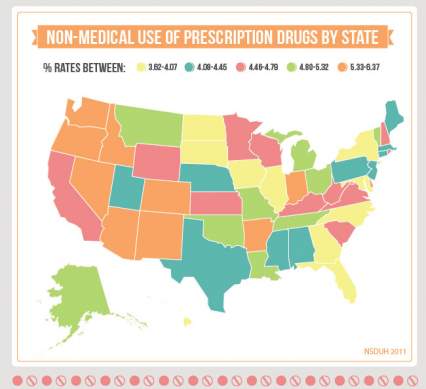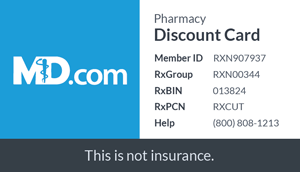Guide: How to Save Money on Your Prescription Medications

A Guide to Saving Money on Prescription Medications & Lowering Out-of-Pocket Drugs Costs
Explore some of the most common ways patients are able to save money on prescription medications in our guide below. Have a tip or strategy that helps you save? Let us know in the comments below!
1) Talk Openly With Your Doctor
Doctors are not always familiar with the price their patients pay for the pills they prescribe. With the way things work in the American healthcare system, doctors can never be sure about the final price their patient is paying.
However, that doesn’t mean that your doctor is not willing to work with you to help you save — quite the contrary. And while it may be a bit uncomfortable to admit to that you can’t afford a specific medication, doctors are often quite compassionate when it comes to patients and their healthcare costs.
If you’re having trouble affording your medications, your doctor needs to know. You’re being prescribed the medicine for a reason, and if you’re not taking them due to the cost, your physician will almost always work with you to find an alternative solution — which often starts with the move from name-brand medications to the generic versions (which is a great way to save money when available).
2) Take Advantage of a Pharmacy Discount Card
Pharmacy cards are a fairly well-known way to save money on prescription medications. There are a wide variety of pharmacy cards readily available on the web from a variety of sources, with some being free and others requiring a one-time or monthly fee.
MD.com offers a 100% free Pharmacy Discount Card that provides instant savings on prescription medications. There are no enrollment costs, fees, or even a signup required — simply print or save your card and take it with you to your pharmacy the next time you pick up your prescriptions. It can be used with or without insurance, and is accepted at more than 60,000 pharmacies nationwide, and works for all FDA-approved medications (click here to learn more).
Ready to start saving? Click here to print or save your Pharmacy Discount Card now (and if you’re on a mobile phone, you can simply screenshot the card and present it to your pharmacist the next time you’re picking up your medications).
To see the potential savings, use this tool to search drug costs for your specific medications at pharmacies near you that offer discounts using the free Pharmacy Discount Card from MD.com.
3) Find a Patient-Assistance Program
Assistance from Pharmaceutical Companies
There are many medications that are offered to patients on different discounts, either by the pharmacy or the pharmaceutical company. Pharmaceutical companies go as far as offering patients the medications they need for free if the situation is urgent. As a result, before paying sticker price for your medications, take some time to search for opportunities to save through pharmaceutical companies own programs by calling them, or by visiting the company’s official website for more information.
Assistance from Patient Charities & Foundations
There are also patient advocate groups, foundations, charities and other similar organizations that can offer financial assistance with regard to prescription drugs. One such foundation is the Patient Advocate Foundation, which provides a searchable database of opportunities to save on drugs. Simply visit their search tool to enter your age, state, and condition to browse potential savings.
Another is the Partnership for Prescription Assistance (PPA), which is a free service that was created to “created to make it easier for low-income, uninsured patients to get free or nearly free prescription medicines through existing patient assistance programs.” Click here to browse the PPA’s list of participating Patient Assistance Programs.
Another great resource can be found at NeedyMeds.org, “a 501(c)(3) national non-profit information resource dedicated to helping people locate assistance programs to help them afford their medications and other healthcare costs.” Click here to browse their drug list.
Discounts from AARP
If you’re an AARP member, click here to to browse the AARP Prescription Discounts section of their official website to learn more.
4) Shop Around to Compare Prescription Prices at Different Pharmacies
Nearly every pharmacy will charge different prices for the same medications. With that in mind, if you haven’t shopped around to see if you can get a lower price on your medications, now is a great time to start.
We shop around for the best deal on nearly everything in life, so why not do the same for your prescription medications? If you’re taking a lot of medications, this can end up saving you a lot of money each month, simply by shopping around for the best deal.
It might seem strange but the prices of prescribed drugs vary from one pharmacy to the other. The thing about pharmacies is that patients can often negotiate to get the best prices, or order in bulk for a discount (for example, the pharmacy may offer a discount for ordering a 60-90 day supply). Additionally, it’s important to note that local pharmacies may have more autonomy over pricing and ability to negotiate than the national chains, so you may be able to find a better deal at smaller, more localized pharmacies.
We usually head to the same pharmacy where we pick up all of our medications out of convenience. And if you’ve been going to the same pharmacy for years, speak with your pharmacist to see if they can offer you a discount by letting them know you’re trying to tighten your belt and save money wherever you can — which includes your prescription bills.
5) Move from Brand-Name to Generic Drugs
Typically, many doctors prescribe medications under the brand-name version of the medication. However, many are also available in generic form, which are approved by the FDA and are almost always much cheaper.
In 2010 alone, FDA-approved generics saved consumers a staggering $158 BILLION as alternatives to brand-name prescription drugs.
And with research showing that generic medications work just as well as their name-brand counterparts, it usually makes a lot of sense to make the move.
What’s the difference between a generic and brand-name drug?
Brand-name drugs are those that go by a trademarked name which is created by the company who submitted the drug to the FDA for approval. It’s the “exclusive property” of that company — for example, “Tylenol” is the trademarked name of a medication whose generic name is acetaminophen.
When a new drug is approved by the FDA, it’s assigned a “generic” name by the United States Adopted Names (USAN) Council — which is not an exclusive trademark of any one company.
An easy example to understand
A great example of a brand-name vs. a generic drug would be Tylenol (trademarked brand-name) vs. acetaminophen (generic).
You can learn and read more about the difference between the two on Merck’s website, here.
6) Splitting Double-Doses in Half
One strange rule in the pharmaceutical industry is that not all medications double in price when the dosage doubles. So, many patients who are conscious of their medication costs speak with their doctor about being prescribed a double dose — allowing them to split the pill in half.
Please Note: Not all medications can be split safely, so it’s important to discuss this tactic with your physician to see if it’s a viable, safe option.
7) Store Your Medications Properly
While it may sound odd, tons of pills go to waste because of improper storage. Nearly all prescribed medications should be kept in a dark, cool place (and out of the reach of children). That being said, it is important to mind the expiration dates, and properly dispose of your medications when they’re expired.
8) Prevent the Onset of Chronic Disease
By staying healthy through exercise, a healthy diet and other preventive measures, you can prevent the onset of chronic conditions that require on-going and long-term treatment with prescription medications. With the cost of drugs seeming to continue to rise, the more conditions you can prevent, the better off your pocketbook will be. And with the Affordable Care Act offering greater access to preventive services such as mammograms, colonoscopies, and other tests and screenings, it’s important to take advantage — early detection helps prevent more costly treatment modalities.
Conclusion
Is the US addicted to prescription drugs?
Unfortunately, the US is dubbed as a pill-popping nation. Here’s what the numbers are saying:
- A shocking number of people — 52 million — in the US above the age of 12 have used a prescription drug non-medically;
- 5% of the people in the US consume 75% of the entire amount of prescription drugs in the world;
- Back in 2010, the amount of prescription drugs that were used in the US was enough to medicate every single American adult, every 4 hours, for an entire month.

Infographic via the National Institute on Drug Abuse – Popping Pills: Prescription Drug Abuse in America
And things are getting even more serious…
In overall, it can be said that a great number of adults take at least one prescription drug and the issue is getting even more serious with the older generation. Among senior citizens (60 or older), more than 76% use at least 2 prescription drugs, and 37% use 5 or more pills.
The next big issue with prescription drugs is that they can be pricey, even when they’re covered by your insurance. Things get even more complicated with people who don’t have health insurance but are in need of prescription drugs – trends of prescription drug abuse are going down for people who need to buy the pills but don’t have health insurance. Instead of getting healthier, they are slowly dying.
However, we should never forget the essential meaning of prescription drugs – they are prescribed by a medical doctor who has estimated that the patient needs the pills in order to treat themselves and regain their health.
Resources from the National Institute on Drug Abuse
Below: Map of Non-Medical Use of Prescription Drugs by State

Infographic via the National Institute on Drug Abuse – Popping Pills: Prescription Drug Abuse in America
Below: 12 Reasons Teens Use Prescription Drugs Infographic

Infographic via the National Institute on Drug Abuse – Popping Pills: Prescription Drug Abuse in America
Sources & Credits
- “Popping Pills: Prescription Drug Abuse in America”. National Institute on Drug Abuse. Published in 2014, accessible online at https://www.drugabuse.gov/related-topics/trends-statistics/infographics/popping-pills-prescription-drug-abuse-in-america
- “Prescription Drug Use Continues to Increase: U.S. Prescription Drug Data for2007-2008”. Qiuping Gu, M.D., Ph.D.; Charles F. Dillon, M.D., Ph.D.; and Vicki L. Burt, Sc.M., R.N. Published in September, 2010, accessible online at http://www.cdc.gov/nchs/products/databriefs/db42.htm
- “The Affordable Care Act, Section by section.” Accessible online at http://www.hhs.gov/healthcare/about-the-law/read-the-law/



